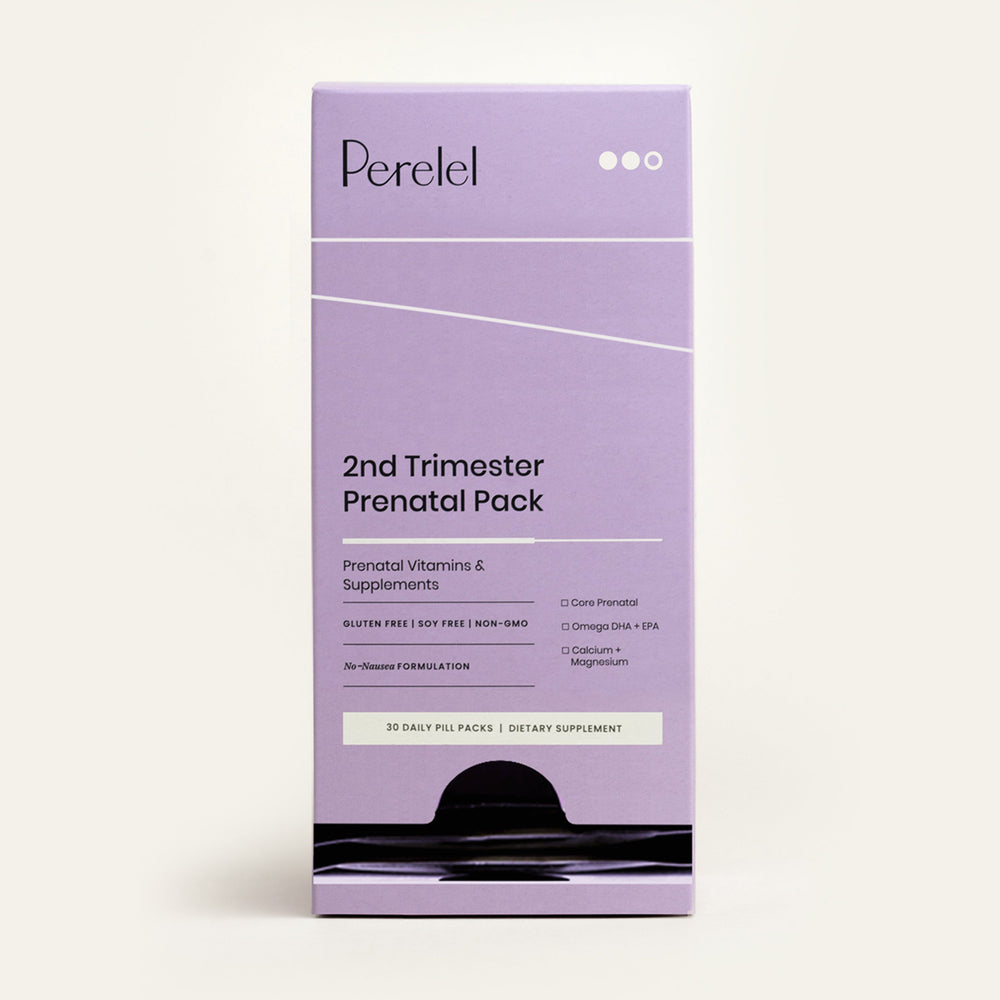Just breathe.
Whether you’re navigating some pregnancy anxiety or starting to prepare your mind and body for labor and birth, some of the most ancient techniques to restore calm and tranquility are also the most accessible—and they all revolve around connecting with your breath. Not only does breathwork combat the occasional bouts of stress and anxiety, but it also can be helpful during pregnancy to manage shortness of breath, connect with your pelvic floor and prepare your body for labor contractions. Experts recommend spending at least 10 minutes each day practicing a breathing technique to connect to your body and your baby. 1 Moreover, once you master the various counts and rhythms, you'll be able to use breathwork as a tool in your arsenal whenever you need it most.
To weigh in on the benefits of each technique, we consulted with Perelel Panel member and pre and postnatal fitness expert Rachel Nicks Lyons. As you approach your due date, find the breathing technique that's best for you below.
If you're feeling anxious: Ujjayi Breath
Ujjayi, which translates to victorious breath, is a long, strong, deep breath that helps you to focus on the present moment and maintain calm. 2 It’s a go-to in yoga and meditation practices because it balances the cardiorespiratory system, which is particularly beneficial in times of stress and anxiety: It gets you out of your fight or flight mode and connects you with your parasympathetic nervous system, which is responsible for helping your body “rest and digest.” This one’s particularly helpful when you need an instant dose of calmness throughout your day.
"During my third trimester, I dealt with a lot of anxiety attacks and calf cramps at night," says Nicks Lyons. "The ugliness, death and racism in this country were overwhelming me. Ujjayi breathing was a tool I used often to calm my mind and connect with my body and my baby. It helped me ground myself when the stress of the world brought me up into my head, causing me to feel nervous and unsettled.”
Try It:
-
With your lips sealed, start to breathe in and out through your nose.
-
Take an inhalation through your nose that is slightly deeper than normal.
-
Exhale slowly through your nose while constricting the muscles in the back of your throat.
-
Repeat this breathing pattern as needed. 3
To help you clear your sinuses: Nadi Shodhana
Nadi Shodhana, also known as Alternate Nostril Breathing, is believed to help balance the body's energy flows according to ancient yogic belief. But simply put: It helps you feel centered. If you’re suffering from nasal congestion due to pregnancy rhinitis, an inflammation of the mucous membranes lining the nose due to the hormones released throughout pregnancy, this practice may feel especially good. The goal is to get air flowing through both nostrils, so your body is restored back to its normal state of balance.
“Pregnancy can create a lot of congestion," says Nicks Lyons. "I love using alternate nostril breathing in the shower with the help of steam to clear my nasal passages. The other benefit is that it allows you to connect to your breath, which helps quiet the mind and connect to your body. I also feel balanced energetically when I am done.”
Try It:
-
Start by sitting in a comfortable seated position with your back upright. We recommend sitting on a chair or on a pillow on the floor. (Whatever feels most comfortable for you.)
-
Curl your index and middle finger toward your palm, leaving your ring and pinky fingers pointing upward and your thumb stretched out to the side.
-
Place your thumb very lightly on the cartilaginous bulb above your right nostril and your ring and pinky fingers against your left nostril.
-
Close your left nostril with your fingers and on an inhale, breathe in through your right nostril.
-
Close your right nostril with your thumb and open the left to exhale through your left side.
-
Now inhale through your left nostril and then gently close your left nostril and release your thumb to exhale through your right nostril.
-
That is considered one full round. Repeat this breathing pattern two more times.4
Shop the Article:


1st Trimester Prenatal Pack
$41.14 First 3 Mo First 3 Months
- Support baby’s early development*
- Helps reduce morning sickness*


2nd Trimester Prenatal Pack
$41.14 First 3 Mo First 3 Months
- Support baby’s skeletal growth*
- Eases your muscle cramps*


3rd Trimester Prenatal Pack
$41.14 First 3 Mo First 3 Months
- Prepares your body for birth*
- Support baby’s rapid growth*
To support the birthing process and postpartum recovery: Diaphragmatic Breathing
Diaphragmatic breathing is an essential tool to learn to help recover from birth postpartum because it helps to connect you to your pelvic floor, the muscles you use throughout pregnancy to carry your baby and to deliver your baby in labor. And even if you end up delivering your baby with a c-section, it’s still important to repair those muscles from holding the extra weight of a baby for three months. This belly breathing engages your transverse abdominal muscles and also brings you the same benefits as the other breathing exercises above by calming your nervous system, just as meditation would.
“I practice and encourage diaphragmatic breathing throughout pregnancy to activate the transverse abdominal muscles so that you can stay supported throughout pregnancy and the muscles stay strong and active for pushing your baby out," says Nicks Lyons. "Birth is the hardest workout of your life—and diaphragmatic breathing will really prepare you for the birth of your miracle.”
Try It:
-
Sit comfortably, and place one hand on your chest and one on your belly.
-
Envision the diaphragm muscle moving up and down as you breathe.
-
When you inhale, allow your belly to expand as your lungs fill with air, and your diaphragm moves down to accommodate your full lungs.
-
When you exhale, feel your belly contract as your diaphragm moves upward.
-
Continue taking slow breaths as needed.
One important note: When practicing breathing techniques throughout pregnancy, you’ll want to avoid any breath retention, shallow breaths or hyperventilation exercises that could limit your baby's oxygen supply. Instead, focus on bringing breath into the body and honestly…just breathing.
Sign up to receive doctor-backed, stage-specific content in your inbox each week.
theFolio in Your Inbox
1 Lynn Felder / Asana Sequence by Shiva Rea. Prenatal yoga poses for each trimester. Yogajournal.com.
2 Guided Meditations from Deepak Chopra
This article is for informational purposes only. It is not, nor is it intended to be, a substitute for professional medical advice, diagnosis, or treatment and we recommend that you always consult with your healthcare provider. To the extent that this article features the advice of physicians or medical practitioners, the views expressed are the views of the cited expert and do not necessarily represent the views of Perelel.




















